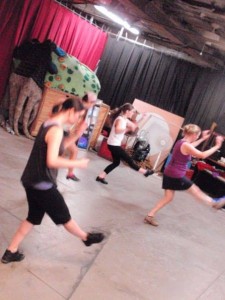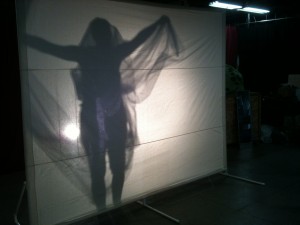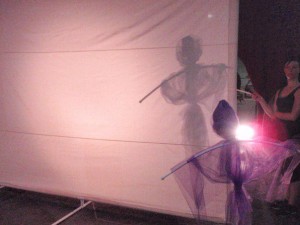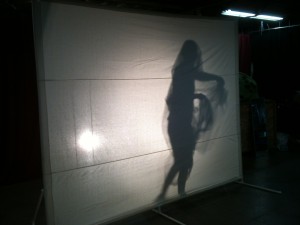The week of workshopping is over, and we made it all the way through page 28 of the script (there are 32 pages, so we’re nearly there!).
It was a week of creation and collaboration. When the choreographer was wondering where to put the Easter Bunny, Mally suggested he hide behind fat Santa (“All kids love Santas and butts!”). Molly suggested the staffs from the fight scene be used to construct a jail cell. And we all had the simultaneous realization that the chase scene should be constructed a la silent movie.
We’ll be sharing posts, photos and videos in the weeks ahead, and here’s a start: the Anderblood Girls Suite. This tune was written by Bill Anderson Jr., a fiddle player in the wonderful contra dance band Dot Dot Dash. Its three movements are dedicated to the three girls in his life: wife Christine and daughters Rebecca and Gwendolyn. In “Christine,” the audience meets the faeries, who flit about the stage and join together in a ring during “Rebecca.” In “Gwendolyn” (written when she was but a crying infant), the faeries begin their battle with the Shadows and Doubts. Oh, the wailing and fussing and fighting! Our musical, “The Captain of the Chocolate Cake,” is a story with a twist on the classic good guy v. bad guy tale — but with a very danceable soundtrack. We dare you to still still or to stop whistling the tune. And we hope you like it. (Taylor Ramos is on fiddle, Kevin G. Anderson on drums. Choreography by Beth Wright. Also shown are dancers Hazel Black and Mally Reber.)




